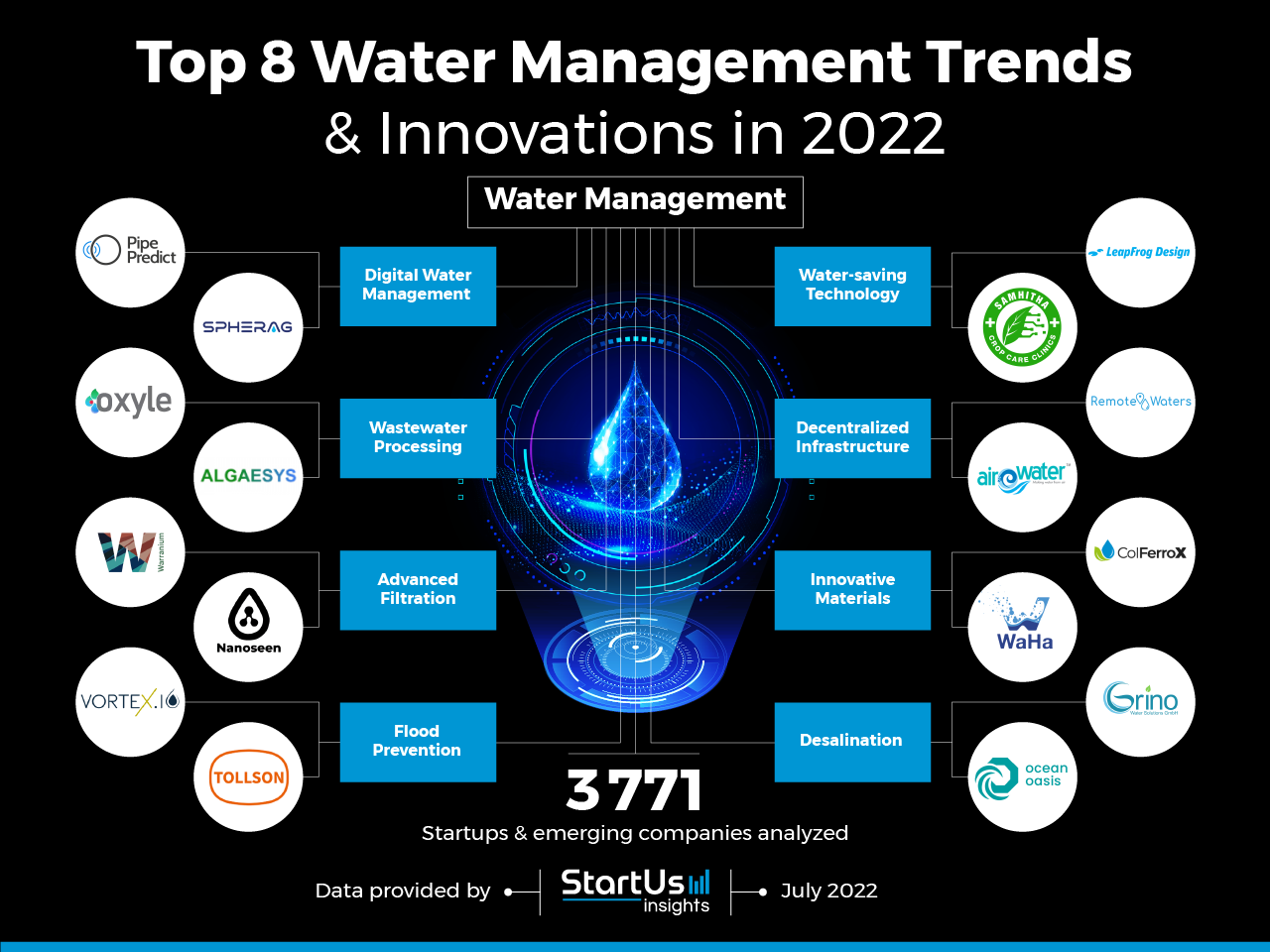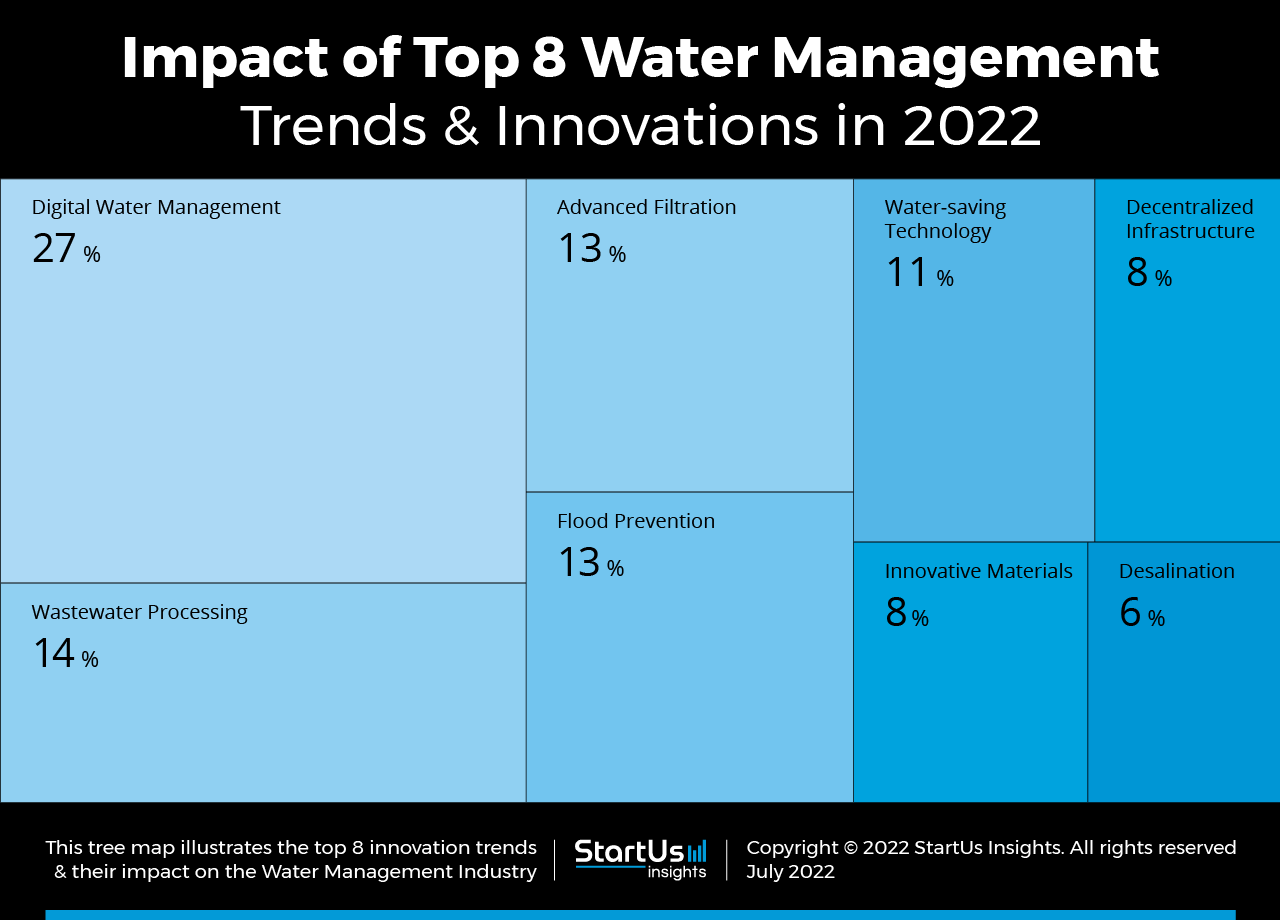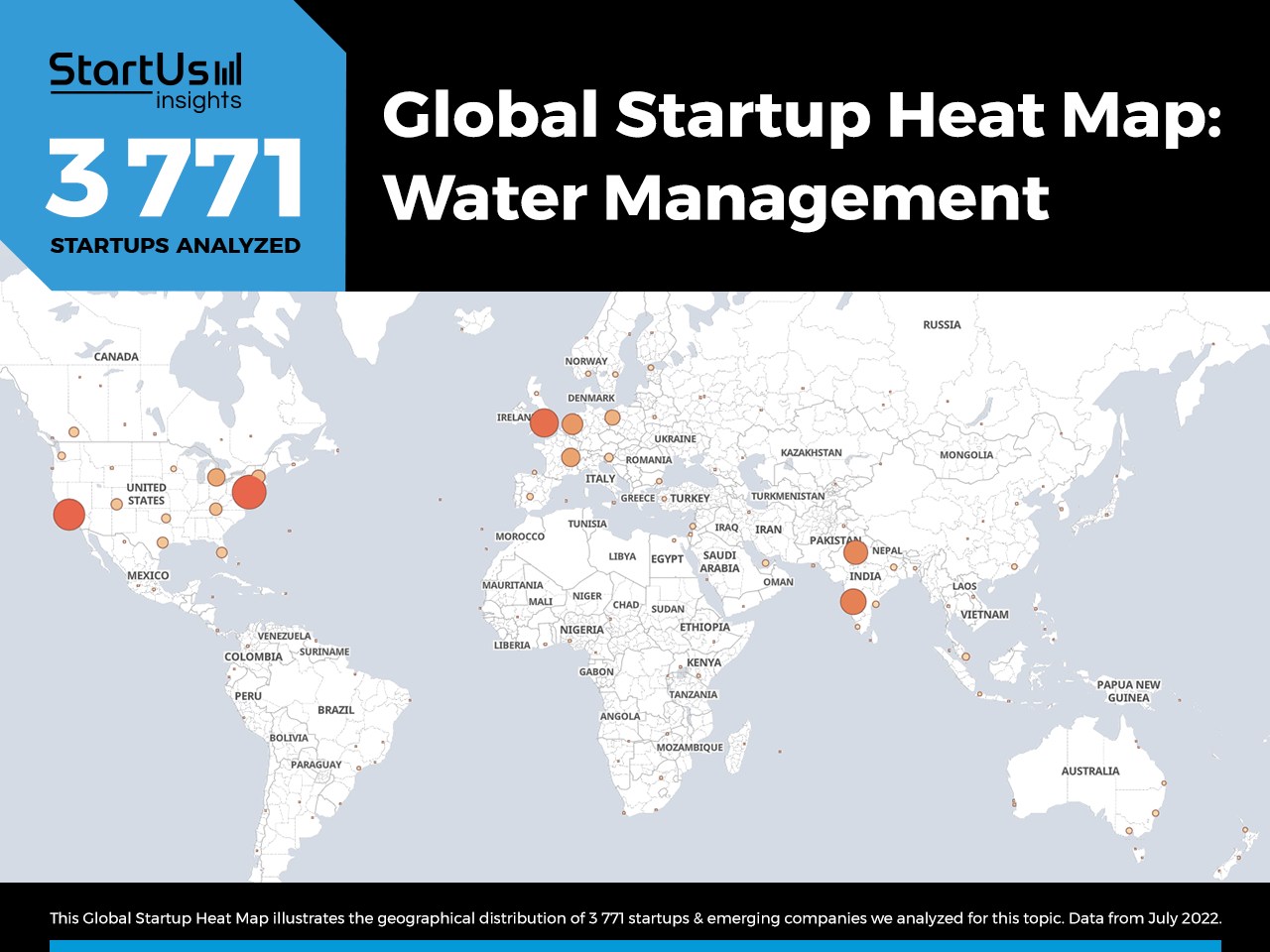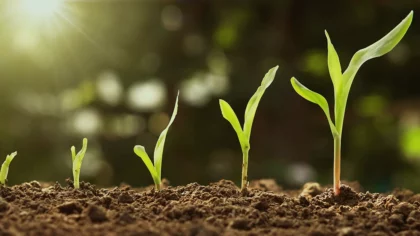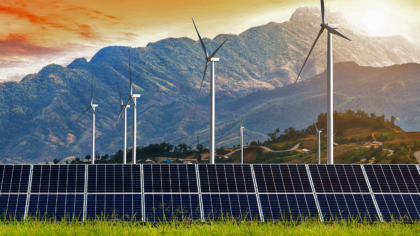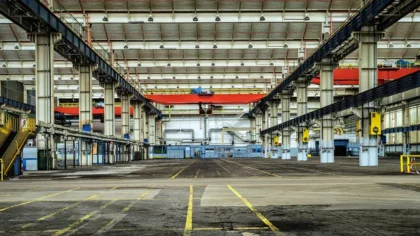In recent years, owing to climate change and the growing population, responsible water management has become a top priority worldwide. Technological transformations are digitalizing conventional processes in water utilities, thereby bringing data-driven intelligence for better-informed policies. To tackle water scarcity, water management startups are advancing technology trends for desalination, wastewater processing, and water-saving technologies. Furthermore, advanced filtration and innovative materials turn existing methods for water recovery and reuse into sustainable and cost-effective solutions. Decentralized water infrastructure is improving access to drinking water in remote areas. Finally, novel technologies go beyond mere water conservation. For example, water management solutions combine flood prevention with water safety and reuse.
This article was last updated in July 2024.
Innovation Map outlines the Top 8 Water Management Trends & 16 Promising Startups
For this in-depth research on the top global decarbonization trends and startups, we analyzed a sample of 3771 global startups & scaleups. This data-driven research provides innovation intelligence that helps you improve strategic decision-making by giving you an overview of emerging technologies and trends in the water management industry. In the Water Management Innovation Map, you get a comprehensive overview of the innovation trends & startups that impact your company.
Top 8 Water Management Trends in 2025
- Digital Water Management
- Wastewater Processing
- Advanced Filtration
- Flood Prevention
- Water-saving Technology
- Decentralized Infrastructure
- Innovative Materials
- Desalination
Want to explore all Water Management innovations & trends?
These insights are derived by working with our Big Data & Artificial Intelligence-powered StartUs Insights Discovery Platform, covering 4.7M+ startups & scaleups globally. As the world’s largest resource for data on emerging companies, the SaaS platform enables you to identify relevant technologies and industry trends quickly & exhaustively.
Tree Map reveals the Impact of the Top 8 Water Management Trends
Based on the Innovation Map, the Tree Map below illustrates the impact of the Top 8 Water Management Trends in 2025. Digital water management is the most impactful trend that predominantly implements artificial intelligence (AI), the Internet of Things (IoT), and smart meters to do what track what happens in water grids. This is followed by wastewater processing and advanced filtration that employ a wide range of water treatment methods like membrane nanotechnologies and find use in residential and industrial settings.
Another important trend is flood prevention, which utilizes drones and weather radars to monitor water levels across reservoirs. Additionally, water-saving technology and decentralized infrastructure provide onsite potable water. Finally, water startups are also advancing innovative materials and desalination that offer sustainable and efficient water generation for regions with water shortages.
Global Startup Heat Map covers 3771 Water Management Startups & Scaleups
The Global Startup Heat Map below highlights the global distribution of the 3771 exemplary startups & scaleups that we analyzed for this research. Created through the StartUs Insights Discovery Platform, the Heat Map reveals that the Netherlands and the US see the most startup activity.
Below, you get to meet 16 out of these 3771 promising startups & scaleups as well as the solutions they develop. These water management startups are hand-picked based on criteria such as founding year, location, funding raised, and more. Depending on your specific needs, your top picks might look entirely different.
Top 8 Water Management Trends in 2025
1. Digital Water Management
Increasing global water demand and the need to maintain aging infrastructure necessitate the growth in digital water management. Technologies such as AI, IoT sensors, and advanced meters enable water quality and quantity control as well as remote asset management and responsible water use.
Also, geographical information systems (GIS), digital twins, and augmented and virtual reality (AR/VR) technologies visualize and model situational scenarios to identify anomalies and prevent potential damage. 5G, blockchain and cloud technologies ensure speed and data security for water management solutions. This way, digital technologies improve the decision-making and efficiency of water utilities.
PipePredict delivers Digital Leakage Detection
PipePredict is a German startup that delivers digital leakage detection using AI, sensors, and digital twins. The startup employs existing sensors and signal transmissions to monitor the current status of different pipe materials. This reduces investment costs and leads to faster deployments.
Additionally, a digital twin virtualizes the piping networks to execute condition assessments and optimizes the asset performance. Further, machine learning analyzes the collected data to predict potential bursts in the system. This way PipePredict saves valuable water and prevents repair losses, improving resource efficiency in water networks.
SPHERAG provides Agricultural Water Management
Spanish startup SPHERAG develops an intelligent agricultural water management solution that combines IoT and cloud services. Its ATLAS devices provide wireless connectivity based on 5G, LTE, and GPRS that allows real-time monitoring. The built-in solar panel also enhances battery durability.
This approach helps farmers to install sensors regardless of geographical location and type of communication network. Besides that, the startup’s cloud platform manages information from satellites and weather stations in real-time. By doing this, SPHERAG adapts farms to the current needs of crops, downsizing energy and hydraulic consumption.
2. Wastewater Processing
Large amounts of wastewater are discharged without prior adequate treatment. Lack of control over water wastage in industrial and residential activities causes pollution of freshwater reserves. Emerging innovations in wastewater processing are trying to effectively recover spent water in different industries.
Technologies such as advanced oxidation processes, adsorption/biosorption, and biological and anaerobic remedies demonstrate promising results. In combination with solar irradiation, they effectively absorb pollutants from wastewater and reduce the amount of produced sludge via microbial decomposition. This way, wastewater processing solutions mitigate contaminants to meet water demands.
Oxyle makes a Nanocatalyst Treatment Reactor
Swiss startup Oxyle builds a nanocatalyst reactor that eliminates toxic micropollutants from wastewater. The startup’s patented technology utilizes a sustainable cleaning material that accurately targets contaminants until full degradation. The nanocatalyst absorbs energy from surrounding water bubbles and vibrations to activate the chemical process for disinfection. This way, the technology avoids multiple filtration steps, leading to a more cost-effective approach with lower energy use.
Algaesys enables Algae-based Wastewater Treatment
Italian startup Algaesys enables algae-based wastewater treatment. Its patented technology uses naturally occurring algae and other phototrophic organisms that derive solar energy through photosynthesis. The Algaesys system removes nitrogen, microplastics, and heavy metals in a safe and carbon-negative way. Moreover, the biomass product from algae substitutes for chemical-sources fertilizers. As a result, Algaesys reuses cleaned wastewater for irrigation and sustains horticulture, aquaculture, as well as industrial activities.
3. Advanced Filtration
Due to the pressing water scarcity problem, startups are paying more attention to fresh and creative methods of water filtration. Nanotechnology advances are enabling the development of filtration membranes that remove hard-to-capture micropollutants. Since nanocomposite membranes have improved chemical properties, they provide higher flux, permeability, and selectivity than conventional solutions.
Another important technology is biological filtration which uses bacteria to purify water while converting energy from oxidation into electricity. Together with natural and self-cleaning filters, new advancements contribute to energy-saving and cost-effective water filtration.
Warranium manufactures a Membrane Bioreactor
Indian startup Warranium manufactures WarraniumMBR, a membrane bioreactor for efficient ultra- and microfiltration. WarraniumMBR also acts as a disinfector for bacteria, coliform, cryptosporidium, and viruses. By additionally applying reverse osmosis, it makes water quality suitable not only for both irrigation and drinking. This way, the startup achieves better effluent quality, reduces footprint requirements, and automates processes in water utilities.
NematiQ makes a Graphene Nanofiltration Membrane
NematiQ, an Australian startup, develops graphene membrane technology for water purification. It leverages a patented high-speed layer-by-layer process to produce graphene membranes with high permeability, precisely tuned molecular weight cut-off, and efficient water and salt transport. These membranes filter out larger contaminants, including colors, dissolved organic carbon, viruses, bacteria, and micropollutants.
4. Flood Prevention
Global warming increases the likelihood of extreme droughts and floods. Recent advances involve not only improved device designs but also include solutions that facilitate monitoring, forecasting, and catastrophe modeling. Enhanced water gates, property protectors, dams, and flood blocks guarantee rapid response to the disaster. Further, drone and satellite-based systems capture vital data through clouds and other obstacles.
In combination with LiDAR mapping and weather radars startups measure wind directions to predict rainfalls. Apart from these, advanced catastrophe modeling provides potential financial consequences for a more holistic picture. Overall, these technologies rethink traditional flood measures to deliver better risk management.
vorteX.io offers a Flood Monitoring System
French startup vorteX.io offers a flood monitoring system based on an in situ sensor network and a digital hydrology platform. It remotely measures water depth and velocity using drones and LED LiDAR sensors. These micro-stations are autonomous, energy self-sufficient, compact, and easy to install.
Additionally, they are embedded with 3G/4G and IoT for fast connectivity. Further, with the MAELSTROM platform, customers receive real-time hydrological data and notifications in case of emergency. This way, vorteX.io provides a tech-driven solution to secure people from potential disasters.
ZoJacks manufactures a Flood Detector
Zojacks develops a wireless addressable flood detector that safeguards commercial properties from water damage. The detector provides real-time flood alerts and precise location data. The system instantly alerts property managers and relevant personnel through push notifications, reducing response time and enabling swift action. ZoJacks also makes water sensors that detect water leaks and a remotely controlled water shutoff valve, WaterStop, to amplify the efficiency of the flood detector.
5. Water-saving Technology
Facing growing challenges with freshwater availability, there is a growing global demand for water-saving technologies. This trend is impacted by water reuse, recycling, intelligent irrigation, and home conservation. To achieve circularity, startups design water-saving toilets, taps, and shower heads. They control water flow, limit the quantity of water used, and redirect it for other purposes.
Besides, new recycling technologies extract valuable resources and nutrients for practical repurposing. Efficient irrigation techniques are another important direction that advances precision farming by measuring and minimizing overwatering. This way, startups are using a range of approaches to save water in different settings.
LeapFrog offers Modular Water Reuse Systems
US-based startup LeapFrog offers modular water reuse systems for homes and gardens. Its technology is based on purifying properties of volcanic soils powered by real-time monitoring. Existing off-site centralized solutions for wastewater treatment require massive investments.
On the contrary, the startup’s onsite reuse of non-potable greywater from laundry and garden irrigation drastically reduces the household’s expenses. The decentralized recycling of greywater decreases the costs of installing new water infrastructure and contributes to drought resilience.
Samhitha offers a Precision Farming Platform
Indian startup Samhitha builds a precision farming platform for responsible water irrigation conservation. The platform utilizes wireless devices including drones and weather sensors to monitor irrigation water quality and soil moisture. It analyses collected samples to intelligently schedule crop irrigation. This way, Samhitha conserves moisture in soils and prevents water wastage, which is essential for regions with rain and groundwater scarcity.
6. Decentralized Infrastructure
The interest in decentralized water infrastructure is growing as a measure that improves the resilience of communities. Modular and mobile electrocoagulation treatment makes users independent of centralized systems that are unavailable in remote regions.
Further, personalized water systems include off-grid supply, facilitated by real-time digital technologies and tracking apps. Meanwhile, in-home water solutions offer alternative hydration methods by converting air into water. In this way, the distributed practice reduces rising costs and risks associated with old infrastructure, which ultimately improves general resilience.
Remote Waters enables Off-grid Water Supply
Remote Waters is a Chilean startup that provides mobile purification systems for off-grid water supply. These systems filter water using reverse osmosis membranes. Besides, they integrate solar technology and predictive AI to allow autonomous operation and remote control. This way, it ensures low-maintenance, decentralized access to potable water for remote communities.
AirOWater develops Atmospheric Water Generators
Indian startup AirOWater builds atmospheric water generators. The startup utilizes a patented 4-step filtration approach that removes dust, bad odors, and physical contaminants using advanced carbon-based filters. The system generates water by condensing the purified air. This way, compact generators allow drinking clean water at any place being independent of centralized water infrastructure.
7. Innovative Materials
Recent progress in material science provides new opportunities to overcome water supply challenges. Innovative materials such as modular adsorbents, electrode-based reactors, photocatalysts, and nanoparticles are key technologies that are advancing this trend.
Their beneficial chemical and mechanical properties offer a smaller footprint while improving selectivity, efficiency, and reliability. By integrating materials with various properties, startups are developing multifunctional systems that achieve multiple functions in water management.
Levapor enhances Biological Wastewater Treatment
Levapor is a German startup that offers advanced MBBR (moving bed biofilm reactor) and IFAS (integrated fixed film activated sludge) media for biological wastewater treatment. The startup’s MBBR media consists of reticulated PU foam combined with activated carbon, ensuring a high specific surface area and adsorption capacity. This composition facilitates the growth of efficient biofilms on the carrier, leading to enhanced treatment efficiency. Applications span BOD/COD reduction, Ammonia Nitrogen reduction, and COD reduction in sewage and industrial effluent treatment plants.
WaHa creates Water Harvesting Materials
US-based startup WaHa offers a solar-powered, water harvesting technology using metal-organic frameworks (MOFs). MOFs allow water extraction from the air even under very arid conditions. Also, due to the high porosity of MOFs, they adsorb a wide range of chemicals. As a result, the startup’s technology harvests drinkable water from low humidity air tackling urgent water scarcity issues.
8. Desalination
Water desalination is an industrial process that requires huge amounts of chemicals and energy to proceed. Therefore, startups are focused on developing innovative and eco-friendly solutions that reduce costs. New desalination approaches use renewable energy such as solar power to reduce carbon emissions.
Other methods employ biomimicry by which plants and fish extract seawater with minimal energy. Additionally, innovative aquaporin-based technology targets and blocks salt out of water. This way, novel seawater desalination shifts beyond traditionally expensive and fossil-based methods.
Grino delivers Battery-free Desalination
German startup Grino delivers a solar battery-free water desalination system. Grino filters any kind of water source using reverse osmosis purification. The embedded irradiation sensors fully automate the system by consistently measuring available solar energy. This way, Grino’s desalination system operates decentrally, with the lowest maintenance and in a sustainable way to produce clean water.
Ocen Oasis builds a Wave-powered Desalination Plant
Norwegian startup Ocean Oasis build a floating, wave-powered desalination plant. Its patent-pending solution transforms energy from fluctuating waves to sustain a stable flow of pressurized water. Further, it uses the energy to deliver fresh water through pipes. This way, the application of wave-powered plants sustainably produces desalinated water, minimizing the environmental impact.
Discover all Water Management Trends, Technologies & Startups
The water management industry is adopting digitalization, advances in material science, and hydrological engineering. These water management technologies effectively clean water, conserve it, and reuse it for various purposes. In the future, creative solutions will make these innovations even more accessible, sustainable, and cost-effective. For instance, a new technology extracts filtered water from cow manure. However, tech-driven measures are not always enough to combat environmental challenges. The use of AI, AR/VR, and gamification will motivate people to change behavioral patterns and commit more seriously to improving access to water for everyone.
The Water Management Trends & Startups outlined in this report only scratch the surface of trends that we identified during our data-driven innovation and startup scouting process. Among others, decentralized grid, water recovery, and desalination will transform the sector as we know it today. Identifying new opportunities and emerging technologies to implement into your business goes a long way in gaining a competitive advantage. Get in touch to easily and exhaustively scout startups, technologies & trends that matter to you!
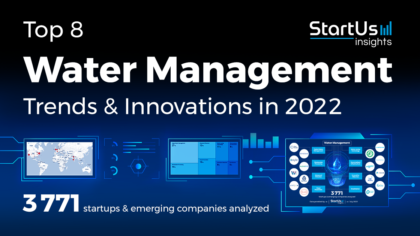
 WATCH THE VIDEO VERSION
WATCH THE VIDEO VERSION 